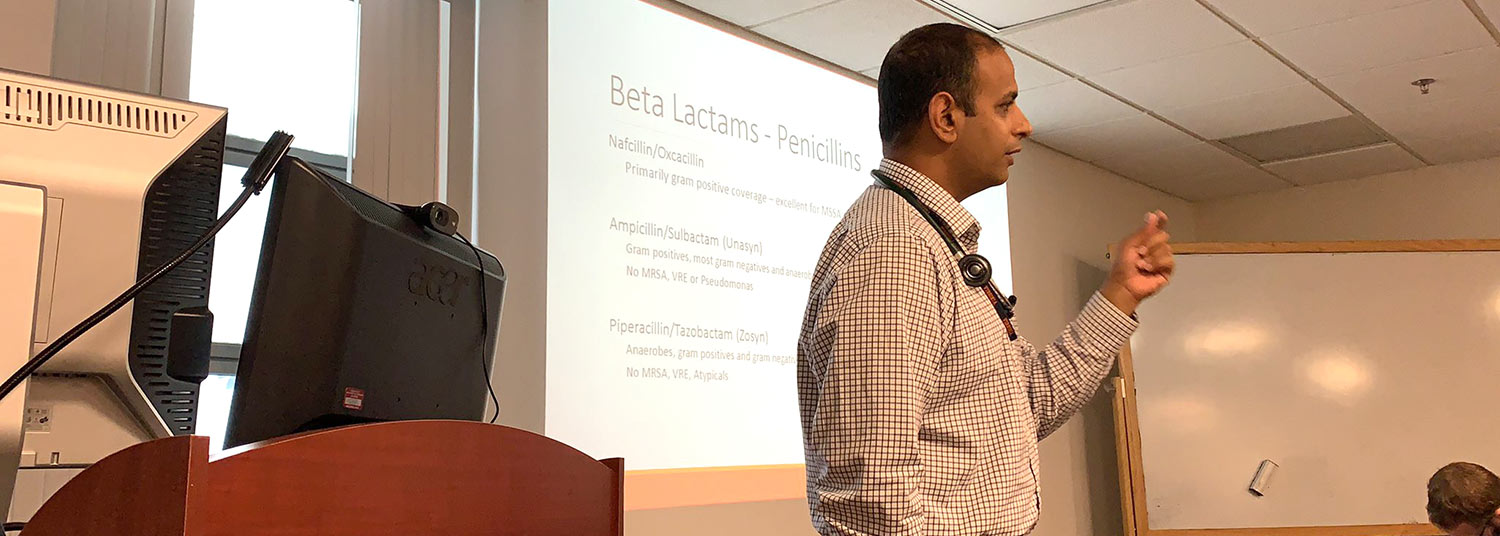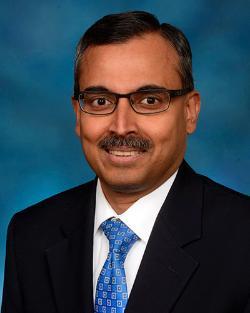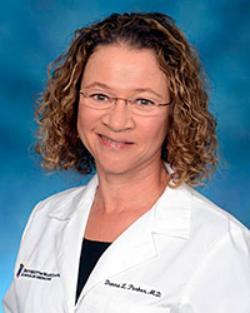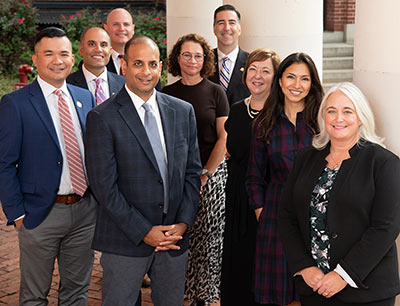
If someone had told Devang Patel, MD, 15 years ago that today he would spend half his time managing coursework, instructors, and teaching, he would never have believed them.

Just recently, he was also named Assistant Dean of the Pre-Clerkship Curriculum. A UMSOM leadership position in which he is in charge of the first two-years of medical school education, ensuring 280 medical students learn through appropriate coursework and support.
 “Development of young physicians for the future is an important priority of IHV’s strategic plan. Over the past several years, IHV faculty members, including Dr. Patel, have spent significant time and effort in training next generation physicians globally,” said Shyam Kottilil, MBBS, PhD, Professor of Medicine, Director of the Division of Clinical Care & Research, Head of the Clinical Care Research Unit at the University of Maryland School of Medicine's Institute of Human Virology. “The ability to translate current scientific advancement to new, young, ambitious doctors is an art form, which is epitomized by Dr. Devang Patel and his relentless efforts.”
“Development of young physicians for the future is an important priority of IHV’s strategic plan. Over the past several years, IHV faculty members, including Dr. Patel, have spent significant time and effort in training next generation physicians globally,” said Shyam Kottilil, MBBS, PhD, Professor of Medicine, Director of the Division of Clinical Care & Research, Head of the Clinical Care Research Unit at the University of Maryland School of Medicine's Institute of Human Virology. “The ability to translate current scientific advancement to new, young, ambitious doctors is an art form, which is epitomized by Dr. Devang Patel and his relentless efforts.”
His responsibilities include developing, improving, and organizing the curriculum and ensuring each course has appropriate instructors. In addition, he ensures faculty get developmental support for learning how to teach, use best practices, and improve the quality of their teaching through feedback from students.
“The Assistant Dean position is essentially advancing the work that we started with the new Renaissance Curriculum two years ago,” said Dr. Patel.
 “Devang is an outstanding teacher who evolved into an innovative and engaged course director in the Legacy Curriculum. When it came time to create our Renaissance Curriculum, we naturally called upon Devang and his skills to lead the development of our new and highly successful pre-clerkship curriculum,” said Donna Parker, MD, FACP, Professor of Medicine and Senior Associate Dean for Undergraduate Medical Education at UMSOM. “His promotion to Assistant Dean is an acknowledgement of his profound dedication to the education of our students, his administrative skills, and his teamwork and collegiality. All of us in the Dean’s Office look forward to seeing what Devang will continue to achieve as a medical educator.”
“Devang is an outstanding teacher who evolved into an innovative and engaged course director in the Legacy Curriculum. When it came time to create our Renaissance Curriculum, we naturally called upon Devang and his skills to lead the development of our new and highly successful pre-clerkship curriculum,” said Donna Parker, MD, FACP, Professor of Medicine and Senior Associate Dean for Undergraduate Medical Education at UMSOM. “His promotion to Assistant Dean is an acknowledgement of his profound dedication to the education of our students, his administrative skills, and his teamwork and collegiality. All of us in the Dean’s Office look forward to seeing what Devang will continue to achieve as a medical educator.”
Dr. Patel’s initial teaching experience as faculty began in Lusaka, Zambia for a year working with the University of Zambia to develop a residency program in HIV Medicine for Zambian physicians. He then developed a similar program for the University of Notre Dame-Port au Prince in Haiti on how to provide expert HIV care in settings with limited resources.
 When back in Baltimore, he trained residents and fellows during inpatient rounds or outpatient visits and over time became drawn towards undergraduate medical school education. Michael S. Donnenberg, MD, who is now a Dean at the Virginia Commonwealth University, invited Dr. Patel to be a co-lead on the 10-week course Host Defense and Infectious Diseases in 2010. In a couple years, he was leading the course.
When back in Baltimore, he trained residents and fellows during inpatient rounds or outpatient visits and over time became drawn towards undergraduate medical school education. Michael S. Donnenberg, MD, who is now a Dean at the Virginia Commonwealth University, invited Dr. Patel to be a co-lead on the 10-week course Host Defense and Infectious Diseases in 2010. In a couple years, he was leading the course.
Then four years ago, the School of Medicine decided to revamp the medical school curriculum to modernize it and adopt new learning techniques. The university assembled a group of innovative, young faculty invested in the program, who then divided up responsibilities in developing the new curriculum. The Office of Medical Education expanded to accommodate this transformational group with unique ideas in leadership positions.
This is when he took on the position as Director of the Pre-Clerkship Curriculum. In the new curriculum the first-year basic science material streamlined to give students more clinical exposure earlier. The new curriculum teaches 10 courses that cover each of the body’s systems, as well as 15 embedded content topics like cancer or infectious diseases, which span across all of the systems.
“I try to teach with an eye towards innovation. Listening to a lecture isn’t the best way to learn because people zone out,” said Dr. Patel. “We try to incorporate active learning and small groups, understanding that is how people learn better.”
Active learning is based on the principle that someone will remember 10% of what they read, 20% of what they hear, 30% of what they see, 70% of what they say, and 90% of what they do.
“We give the students the basic knowledge and have them apply what they know by working in a small group to work out a problem,” he said. This translates to two hours of lecture a day, followed by two hours of active learning.
“It’s rewarding to see the students progress through their training,” said Dr. Patel. “There are people who I worked with as students who are now faculty.”
The other half of his time is spent doing IHV clinical and administrative duties. In 2016, he became chief of service for the inpatient HIV and Infectious Diseases service. Aside from doing a certain number of weeks at the University of Maryland Medical Center, much of his time dealing with education and clinical duties is intertwined.
Dr. Patel added, “I may get an email or text about a patient care issue that I need to address at that moment and of course medical school doesn’t stop when I’m on service,” he added.
